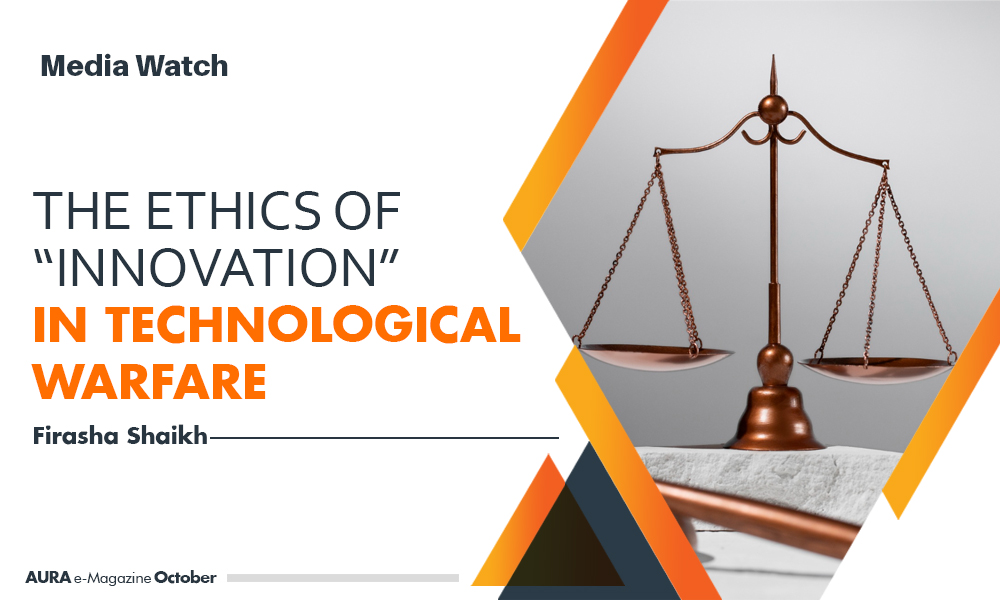One of the most common refrains in social justice movements, even more relevant in the context of Palestinian liberation, is “injustice anywhere is a threat to justice everywhere.” For decades, Palestinian activists have warned the global community that Israel’s existence and continued support from Western powers is dangerous not just for Palestine, but for the whole world.
The latest series of coordinated bomb blasts using communication devices in Lebanon, orchestrated by Israel and beginning on 18th September, opened another horrifying chapter in Israel’s genocide of Gaza, something openly acknowledged by the former as “expanding our war goals away from Gaza.” According to the latest reports, the death toll from these blasts stands at nine people, with nearly 2,750 seriously wounded or injured, along with extensive destruction of property and infrastructure.
While it isn’t clear what methodology was used to set off the bombs, SMEX, a digital rights organisation in Lebanon, has offered possible explanations. However, it is abundantly clear that extremely sophisticated technology was utilised — an insidious type that concealed any sign of its presence until detonation.
In doing so, Israel violated one of the most basic rules of international warfare: the prohibition of booby-trap devices, and ordinary objects concealing explosives that could harm civilians. But given the fact that Israel has consistently broken every remaining limit of barbarity in its genocidal war in Gaza, the Lebanon attacks are simply the opening of the next frontier.
Israel’s use of technology in warfare, both in Gaza over the past year and most recently in the Lebanon attacks, should signal a red alert in the global discourse around the use of technology in warfare, as well as the larger question of ethics in science and technology.
In *The Palestine Laboratory: How Israel Exports the Technology of Occupation Around the World*, author Antony Loewenstein details Israel’s technological progress in developing warfare technologies, arms, ammunition, surveillance technologies, and more. The sole aim of this research and development was to create increasingly innovative ways to kill, surveil, imprison, and persecute Palestinians. Worse still, Israel did not stop at developing those lethal technologies and using them against Palestinians but profited from exporting them and their products to governments and regimes around the world in the name of defence, military, and security alliances. Various governments have used these technologies against their citizens to quell dissent, imprison anti-government activists, and even kill people deemed “security threats.”
Ironically, Israel is set to join the first global AI convention, despite its well-documented use of advanced AI to target Palestinians in Gaza for both surveillance and bombardment.
The use of technology in warfare in egregious, inhumane ways is not unique to Israel. Indeed, it continues the legacy of the World Wars, from the use of gas chambers in Europe by the Nazi regime to the nuclear bombs dropped by the United States to Japan’s Unit 731, among others.
The word “dystopia” seems inadequate to describe a world where research and technology are being developed with meticulousness and investment — not to improve human conditions, reduce socio-economic inequalities, combat climate change, or make the world more accessible or disabled-friendly, but to annihilate human beings. “Innovative” and “creative” ways are being deployed to spill human blood, pollute the skies, and poison the water.
Such use of technology in warfare is deemed acceptable within a global framework that determines who are “unmournable bodies,” as explained by Judith Butler. This is evident in the mainstream media’s binary of ‘civilian vs. fighter’ and its hyper-focus on “hostages” over the past year in its coverage of Gaza’s genocide.
It has never been more urgent to adopt a
strong ethics-based approach to the conversation around science and technology. In a world where the sole purpose of technological advancement seems to be either to maximise profits, maintain geopolitical hegemony, or occupy land — with no regard for human costs or ecological impact — the Islamic concepts of ‘Istikhlaaf’ and ‘Imaratul Ardh*’ become crucial and provide a way forward.
The Holy Qur’an says:
“Do you not see that Allah has made subject to you whatever is in the heavens and whatever is in the earth and amply bestowed upon you His favours, both apparent and unapparent? But of the people is he who disputes about Allah without knowledge or guidance or an enlightening Book from Him.” (31:20)
One wonders how many scientists and researchers have been lost in the recent genocides raging in the world. When pushed to the limits, necessity becomes the mother of invention. Several poignant and heart-breaking instances of Gazans utilizing innovative indigenous technologies and makeshift methods to survive in the refugee camps, (such as harnessing electricity and gathering water) are a testament to the true purposes for which technology should be used — for the betterment and prosperity of humanity and the Earth, not its extermination.
Haim Ginott’s words come to mind,
“I am a survivor of a concentration camp. My eyes saw what no person should witness: gas chambers built by learned engineers. Children poisoned by educated physicians. Infants killed by trained nurses. Women and babies shot by high school and college graduates. So, I am suspicious of education.
My request is this: Help your children become human. Your efforts must never produce learned monsters, skilled psychopaths or educated Eichmanns. Reading, writing, and arithmetic are important only if they serve to make our children more human.”


0 Comments